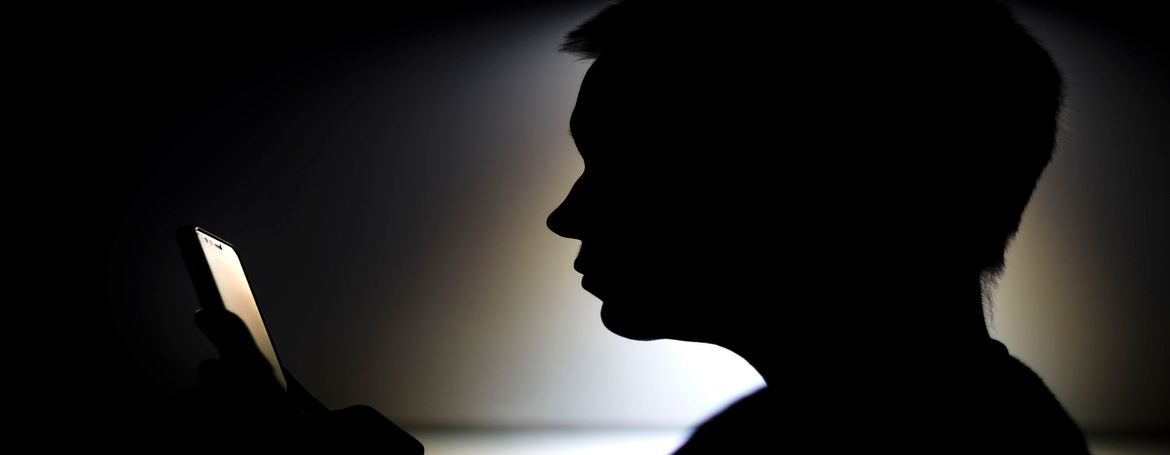- 15-B, Panchwati Colony, Opp. Senapati Bhawan, Jodhpur
- +91-9414121188
- nagendra105@gmail.com

 In Epilepsy
In Epilepsy
Use your Smartphone safely if you have Epilepsy
Using a mobile phone is generally safe for people with epilepsy, but there are some things you can do to make it even safer. Read how.
Imagine scrolling through your favorite app when a pop-up ad suddenly appears on screen with flashing images. For many people, this would be annoying, but for people with photosensitive epilepsy, it could trigger their seizures.
Generally speaking, Smartphones are perfectly safe for people with epilepsy. However certain apps – and behaviors when using your phone – could potentially increase your seizure risk if you have epilepsy. Let’s learn more.
Are there risks to using a Smartphone with epilepsy?
Phones are generally safe, but there are some ways they can potentially provoke seizures in people with epilepsy. By being aware of these risks you can avoid potential triggers:
Photosensitive Epilepsy: People with photosensitive epilepsy could have their seizures triggered by their Smartphone in a number of ways.
One possible issue is call settings – on certain Smartphones, the screen may suddenly change color or white light may flash when you are receiving a call. Similarly, your phone’s alarm clock may make the screen flash.
Another issue is the media on your apps. Whether it is watching videos that contain photosensitive content, flashing pop-up ads, videos on apps like TikTok and Instagram, or GIFs that your friends send you, there are a number of ways that mobile phones could trigger photosensitive seizures.
Noise-sensitive epilepsy: Some people’s seizures are triggered by certain kinds of noises – including cell phone ringtones or music in apps.
Electromagnetic waves: Some scientists have hypothesized that mobile phone use could also change electromagnetic activity in the brains of people with epilepsy, and possibly cause seizures. There is currently very little research to say for sure whether simply using a Smartphone is a risk. Some studies have found a possible link, while others have cast doubt on the idea.
Sleep disturbance: A lack of sleep is one of the leading triggers of epileptic seizures. The way you use your phone could disturb your sleep, and make seizures more likely. The blue light that emits from mobile screens can make it hard to sleep if you look at it late at night (blue light ‘tells’ your body to wake up). Also, if you have notifications (pings or vibrations) turned on at night, they could disrupt your sleep.

How to increase Smartphone safety if you have epilepsy
If you have epilepsy, there are several things you can do to make using your Smartphone safer. These include:
Turning off auto-play in device settings: Most smartphones allow you to disable video auto-play in all apps. This means you will not be instantly exposed to lots of flashing lights in videos with no warning.
Tell apps not to show photosensitive content: In some apps, it is possible to change the settings so they do not show photosensitive content to you. For example, TikTok recently announced a number of new features you can use to tell it to not show your photosensitive content.
Remind friends and family about your epilepsy: People sometimes send GIFs that contain flashing imagery. It can be helpful to remind people that you have epilepsy and ask them to check if a GIF has flashing images before sending it to you.
Reassess your Smartphone usage: Depending on how you use your Smartphone, it could potentially be a seizure trigger. Do you find yourself feeling stressed as you engage with content on social media? Perhaps you could restrict your social media use to one hour per day. Are you unable to sleep because you look at your phone late at night? Perhaps leave it in another room after, say, 10 pm.
Smartphone features that can support epilepsy safety
While there are some risks with smartphones, they also provide several features that can help you manage seizures and improve your safety.
Add your medical ID on your phone’s lock screen: On both Apple and Android phones, you can make information about your epilepsy appear on your device’s lock screen. This can be very useful for anyone who finds you having a seizure, including ambulance crews.
Use epilepsy apps: There are many apps available on both iPhone and Android that provide a way of recording when you’ve had seizures, reminding you about medication, and can even share information with your doctor.
Use your phone for reminders: After having a seizure you may feel confused or have memory issues. It can sometimes be helpful to write a ‘to-do’ list on your phone of all the tasks you have to do each day. That can help remind you of what you were doing before you had the seizure.
Being safe on your mobile phone with epilepsy
Generally speaking, smartphones are perfectly safe for people with epilepsy. While they do pose some risks, there are a few simple steps you can take to minimize potential seizure triggers and use your Smartphone as productively as possible.
